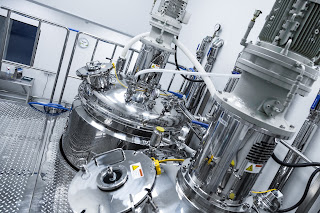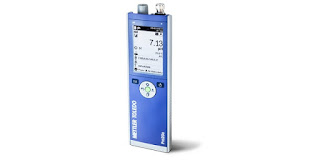 |
Wrap-Around IBC Tote Tank Heaters
(Briskheat) |
Intermediate Bulk Containers (IBCs), also known as IBC totes, or pallet tanks, are reusable industrial containers designed for the transport and storage of bulk liquid or granulated chemicals, food ingredients, solvents, pharmaceuticals, or other material.
Often, to maintain optimum viscosity, there is need to apply heat to the contents of a tote to raise and maintain it's temperature. This ensures the material remains ready for production and is easy to dispense. Without external heat, increased production cost or damage to equipment can occur. Heaters are also used to protect temperature sensitive material inside the IBC tote from cold or freezing, thus reducing the possibility of loss due to ruined materials.
The most effective way to heat IBCs are with specialized electric heaters referred to as "
wrap-around IBC tote tank heaters". These heaters are adjustable to fit many size totes, provide the required wattage to maintain a temperature between 50 deg. F and 160 deg. F. and also include built-in 1/4” fiberglass insulation for thermal efficiency. They can be used with caged, plastic, or metal IBC tote tanks. Installation and secure fit are accommodated with adjustable nylon straps and buckles.
As the contents of the tote empties, there is no reason to continue to heat it's upper zone, so IBC heaters include independent, dual zone temperature control that separately controls the upper and lower zones of the bottle. A built-in high limit thermostat and a grounded heating element prevents overheating and worry-free operation. A standard 120 volt, grounded 3-prong plug is provided for easy power connection (240V models have bare wires).
 |
Silicone Rubber IBC Tote Tank Heaters
(Briskheat) |
An alternative design are
silicone rubber IBC tote tank heaters, for use on totes with removable bottles. Placed inside the IBC cage, directly under, and in direct contact with the bottle, they provide very fast and efficient heat-up. Made from fiberglass reinforced silicone rubber and 1/2” thick foam padding, these heaters provide outstanding durability. This design comes complete with a grounded heating element, thermocouple temperature sensor, and digital temperature controller, and is approved for use indoors and outdoors.
Common Uses for IBC Totes:
- Lubricants/Oils
- Solvents
- Detergents
- Adhesives
- Liquid/Granulated/Powdered Food Ingredients
- Honey/Syrup/Molasses
- Chemicals


















